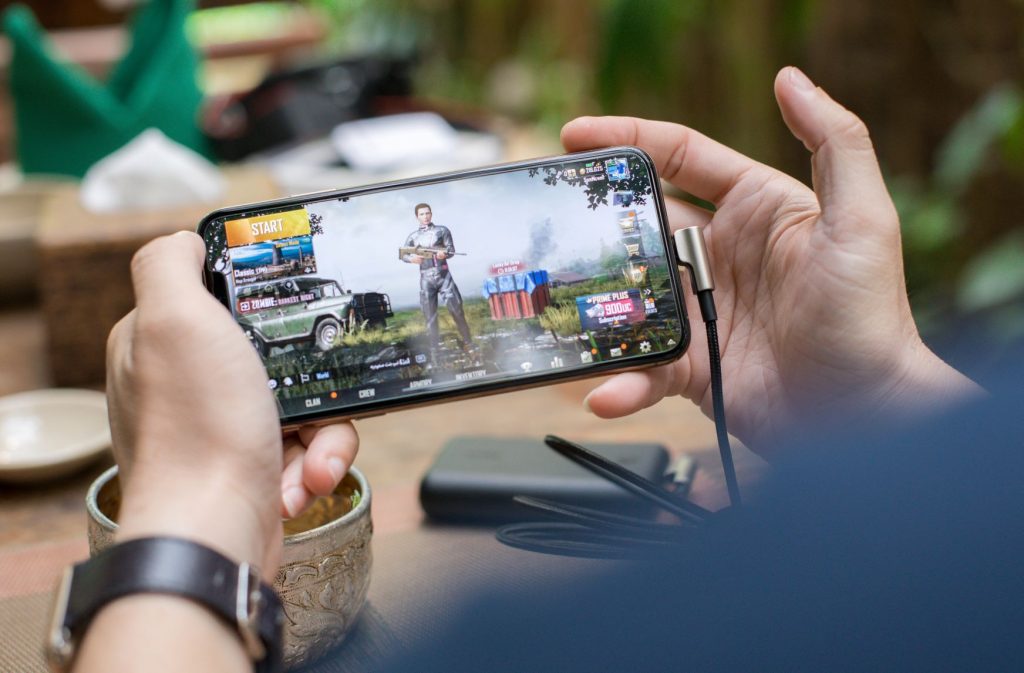Just like in-person experiences, virtual events also need a powerful marketing campaign. While many principles remain unchanged and are to be applied just like in the real world, it is important to focus on small details that make a big difference. For online events, specific marketing strategies will keep your prospective audience engaged and eager to be part of it. Therefore, promotional activities are just as important as choosing the right speakers to offer memorable experiences. So, how do you create an effective marketing campaign for an event that is taking place in a virtual environment? To give you an answer, we’ve put together some marketing strategies designed to drive up traffic and create a real buzz.
Posts archive for April, 2020
Articles related to in-person and virtual events
How to monetize your Virtual Event
Today, more people than ever are using online platforms to host events. The current situation forces many artists to keep their fans engaged through different streaming platforms, right from their own houses. As expected, this change from offline to online is quite different in terms of generating revenue for both event organizers and artists. Therefore, in order to support everyone who puts on live events as part of their daily lives, it is extremely important to find efficient methods to earn actual income from virtual events. In this article, we will go over different monetization strategies for your online events.

How to host a successful Virtual Event
With the global outbreak of the Novel Coronavirus, the events industry passes through challenging times. As health institutions deal with the outbreak, exhibitions and events are postponed or cancelled. This unprecedented situation forces many businesses to adapt accordingly and make temporary decisions to keep operating.
There is no doubt that face-to-face interactions will never go away, but there are times when going virtual appears to be a better alternative. In this article, we will go over different ways that can make your virtual event truly Stand Out!
Meaningful Social Interactions
It seems like one of the main criticisms of online events is that participants don’t have the same opportunities when it comes to networking and interaction, compared to face-to-face events. While this is partly true, the available technologies in today’s world are doing a great job to tackle this inconvenience.
As a result, organizers that decide to go the ‘virtual way’ can opt for easy to implement solutions to keep their audience engaged. Innovative apps enable attendees to stay engaged right from their smartphones. Interactive content, such as live polls, reactions, chat rooms and quizzes are efficient ways to keep them entertained during and after an online event.
However, if you decide to provide your audience with virtual networking tools, keep in mind that social doesn’t just happen, or at least not initially. It is the organizers job to remind audiences that great interaction features are available. Therefore, try to send out newsletters at least a week in advance and include step by step instructions to avoid any concerns.
Streaming Solution and Gear
First, determine if your virtual event will take place in a physical place, or if it will be fully virtual. If you decide to stream it from a physical location, find a solution that integrates with quality stream providers. Usually, online events are streamed in three different ways: 1. Real-time stream 2. Stream with a short delay 3. Record and upload the stream at a later time. The first one seems to be the most popular, because people can interact and attend Q&A sessions.
Live streams can be quite simple if you prepare beforehand. With no room for mistake, using proper software and hardware is very important. Therefore, choose a streaming solution that is configured to withstand the volume of viewers you expect and that is somewhat popular on the market. Keeping aside the streaming aspect, the quality of your equipment can make a huge difference. If you plan to host multiple online events, investing in top-of-the-line gear is a must.
Choose the right Time and Date
Since your event will take place online, location and accessibility are not to be worried about anymore. However, the time and date are just as relevant as ever. Even if we all know that weekends are for events, there are still other things to consider. Is there another important event that might distract your audience? Does the event time coincide with a major sporting event?
Do your research before setting up a time and date for a virtual event. You can even create a short survey and share it with your prospective audience. This way, you can assure that most of them won’t complain about this matter. Besides that, you should establish if your target audience is overseas or if it’s part of the same time zone, especially if you opt to host a live stream. Anyway, you can always upload the video after the show if time difference is a real concern, but keep in mind that live streams can keep audiences more engaged.
Find a Venue when it’s Safe
Just because you host a virtual event, it doesn’t mean that you can simply run it from your office. Obviously, you can do that and it will save you a lot of money, but it’s not going to be as effective as if you were to host it in a real venue. However, during this time of uncertainty, your audience should understand that it’s safer to host events from home rather than hustling around to search for venues. Anyway, once the pandemic has passed, you should find a venue for your virtual events. No need for a spacious venue, just find one with the basics (a podium and audio/visual equipment).

Hopefully, we convinced you that hosting a virtual event is no rocket science and it can actually prove to be efficient. At Oveit, we are currently working on setting up a dedicated platform for virtual events. If you have time, try to complete this short questionnaire. It won’t take more than a few minutes and it will help us develop a solution based on your preferences. Stay tuned for more information and feel free to drop us a line!

Loyalty Programs and Local Communities in Hospitality
Nowadays, there are millions of businesses in the world that focus on delivering different products and services for consumers. Keeping aside the variety of industries that businesses are part of, all of them want to retain their loyal customers and make them return in the future. It all started in 1793, when some U.S merchants decided to offer their customers copper tokens to be redeemed with future purchases.
Hospitality establishments, such as well-known hotel chains are expected to have a structured loyalty program in place for their frequent guests. Holiday Inn was the first brand to launch a ‘frequency’ program in February of 1983. This first-generation hotel loyalty scheme was allowing customers to redeem points and receive special flight prices in exchange. In today’s world, hotel-loyalty programs rely on distinctive experiences that can set them apart from competitors.
Today, we’re going to go over the major hotel loyalty programs around the world, and we’ll give more insights on how hospitality establishments can invite local businesses (communities) to be part of such programs by using our solution.
Well-known Hospitality Loyalty programs
With the nine largest hotel-loyalty programs consisting of nearly 350 million members worldwide, it is clear how this trend developed over the years. Hotel and resort chains are doing their best to differentiate themselves and provide loyal guests with unique and tailored experiences. Before jumping into more details, it is important to keep in mind that guests will value a hotel-loyalty program based on 4 factors: 1. The number of hotels that are part of a chain 2. Benefits that are most important for a guest 3. Destination (some chains have more luxurious properties based on location) 4. The type of hotel or resort that a guest is looking for (boutique, budget, ultra-all-inclusive and so on).
1. Marriott Bonvoy
This loyalty program provides guests with the richest benefits in the hotel industry. Members are entitled to earn points by choosing to accommodate at any of the 6800 locations in over 150 countries. In terms of earning points as a member, Marriott offers its guests different ways for that. For instance, famous banking companies such as Chase and American Express allow their customers to transfer rewards on their Marriot Bonvoy account. Besides that, both companies issue branded Marriot credit cards for personal and business use. Clients that opt for branded cards will receive a sign-up bonus and Marriott points are earned and ready to be used in any location right after every purchase. Referring a friend is also a great way to earn points without much effort. However, Marriott Bonvoy members will earn points whenever they spend money at any participating location, regardless of which credit card is used. For every $1 spent, members receive 10 Marriott points in exchange. These points can be redeemed for various products and services, such as: free hotel/resort stays; room upgrades; lower room rates; holiday packages; car rentals; gift cards; donations; special airline prices and more.
2. IHG Rewards Club
Similar with Marriott’s loyalty offering, IHG Rewards is as well a diverse and rewarding program. Flagship hotel chains such as InterContinental, Crown Plaza, Holiday Inn Resorts and many others are part of it. With more than 5,600 participating hotels worldwide, this program is divided into four membership categories: Club, Gold Elite, Platinum Elite and Spire Elite. Depending on how often you stay at participating locations, the likelihood of upgrading your membership increases. If not claimed within 12 months, earned points are set to expire, but the good news is that points can be transferred between two designated member accounts for $5/1,000 points transferred.
Members part of the IHG Rewards program can also earn points by spending money at nearby shops and dine locations/activities. How does it work? Users can simply search for local activities and vendors from their accounts and verify if businesses reward them with points that can be spent within the IHG group. For a helicopter tour that cost $250 in New York, IHG members automatically receive 1,000 points that can be redeemed at any hotel or resort that is part of the chain. Booking tours and other experiences are booked straight from the account, replacing the need of accessing the partner’s website.
3. World of Hyatt
Very similar with those loyalty programs mentioned above, this one stands out by including respected luxury hotel chains, such as Park Hyatt and Andaz (luxury boutique hotels). The feature that stands out the most in this program is targeting the highest tier members. They get a free night award and two suite upgrades just by reaching this status. Compared with other programs, earning points within World of Hyatt tends to be somewhat difficult. With a single transfer partner (Chase) and one cobranded credit card, you can already see the limitations. This limitation is given by their exclusive establishments and therefore by their rigorous earning criteria’s. One nice feature available is the Points + Cash bookings. It allows guests to get discounted room rates and pay with their points part of the total amount.

Oveit as a Loyalty solution for Hospitality and Local Communities
By looking at these well-established loyalty programs, we’ve identified that our solution can be a great fit in a hospitality environment. Keeping aside the valuable insights coming from guest’s behaviour and preferences, we want to introduce decision makers to our idea of Economy as a Service. After talking to professionals from the hospitality industry, we concluded that tourist destinations struggle with fragmented experiences and therefore have a negative impact on the end users (guests). By fragmented experiences, we want to say that local vendors and businesses in tourist destinations don’t have a common accepted currency and purchase behavior can be affected because of that.
With our solution, hotels and resorts are to act as owners of local economies. Instead of just making recommendations for nearby attractions and experiences, our solution enables guests to make purchases in a defined economy with the same payment tool used for completing purchases within hotels and resorts. It addresses the issue of fragmented experiences and it contributes to a fast and secure purchase behavior.

5 Tips to consider when building a Game Economy
With most mobile games being free to play, developing a well-established in-game economy is essential to earn revenue. According to a recent study from 2019, 95% of apps in the Android Play store are free to download. For this reason, it is the game developer’s duty to get creative and apply monetization strategies accordingly.
As of 2017, in-app advertising (rewarded video ads) was the most effective monetization method for mobile apps. This works by creating ad “placements” within a game (between levels, at the top or bottom of the screen or when the game loads, etc.) and advertisers then bid to have their ads displayed in one of those placements. Lately, in-app purchases took over advertising and is now the most effective monetization model. In this model, players are enabled to purchase additional features, such as extra lives, digital goods and virtual currency within the app. Even if the available data shows that only a small percentage of players make in-app purchases, optimizing for them can make you a lot of money. Therefore, if a game is not sold at a fixed upfront cost and the main goal is to reach commercial success, a strong economy must be implemented.
Here are a few tips to keep in mind when planning and implementing a game economy.
1. Clearly define your game’s style
The type of mobile game developed usually determines the monetization strategy to begin with. For casual games, such as puzzle games or crosswords, monetizing through advertising tends to be the primary model. On the other side, hardcore games like RPG’s or shooters are more complex and monetizing through in-app purchases proves to be more efficient. However, it is important to keep in mind that casual or hardcore games should not rely on a single model. Both in-app and advertising models can be used together, but the primary one should be used based on the game type.
2. In-game Currencies
Since game developers opt to give their games away for free and alternatively charge through in-game currency, choosing the right one is essential to turn a profit. In-game currencies are mainly used for cosmetic purchases (a new design for a character), pay-to-win (users spend money to purchase advantages in the game) or loot crates (boxes with random items that give players an advantage).
Soft Currency and Hard Currency
Soft currency (virtual currency) is earned by completing levels and winning battles within the game. As users advance through the game, they receive a steady flow of soft currency in exchange. A popular one using this type of currency is Candy Crush and it rewards its users with gold bars. On the other hand, hard currency (real money) is more difficult to get, since it has a greater value. Many games provide players with a limited supply in the beginning and they can’t earn more of it by just playing the game. In some cases, the fastest and only way to earn hard currency is by spending real life money. Basically, the most valuable items that give players a good advantage require hard currency in exchange.
Most free to play games tend to implement a dual-currency mechanism (soft and hard). The ones using this dual mechanism are identified as top revenue-generating games. Using a single currency type has a negative impact on the user’s spend flexibility. For instance, games that only use hard currency force users to pay out-of-pocket (real money) for purchasing items within the game. Besides that, a recent study concluded that only about 2-7 percent of users are inclined to invest real money. Therefore, developers can retain their players and contribute to a better user experience by implementing a dual-currency mechanism.

3. No Zero Balance
Even if we were taught that ‘zero’ is the ultimate starting point, in the context of game economies things are different. While experiencing a game for the first time, users must not be required to purchase currency from the very beginning. Alternatively, start them with a positive balance and get them familiar with your game. It is important to let them browse through your game’s store and allow them to purchase a few items by spending the complementary currency. Afterwards, try to identify where “tension” is created within different stages of the game – it shouldn’t be too early nor too late. After finding out the perfect stage where players are fully engaged with your game, introduce them to key features and in-game advantages that can be earned by purchasing the in-game currency. Make them feel like they’ve accomplished something quickly!
4. Nothing Lasts Forever
As we all know that almost nothing lasts forever in the real world, game economies should be no different. However, there are many games out there offering goods that last forever and it seems to be a common mistake. Well, if a user buys items that don’t expire, there is no reason for him to further invest in your game, limiting your profits. To get a better understanding, let’s take the example of a racing game. In the game store, you have a special power that increases the speed of your car for five seconds. By completing more levels, you can upgrade that power and make it last longer, let’s say for ten seconds. If by default that special power lasts ten seconds for all players and can’t be upgraded through game play, they will lose interest in your game and leave it behind.
5. Focus on Lifetime Value (LTV)
Leaving behind the monetization strategy, you want to make sure that your players come back to your game over and over again. Concentrate on making money over the long-term vs the short term. LTV is designed to estimate the overall monetary value of an individual player towards the game. There is no standard way to calculate LTV, but most developers approve that is centered around these two values: lifetime (dealing with user engagement and retention) and monetization (number of transactions).
In theory, the term ‘lifetime’ means the entire life of a person. However, when calculating LTV, developers choose a specific period. It can range from 90 days, 180 days, 1 year, 2 years and so on. When deciding on a specific period to calculate LTV, developers decide based on internal (type of game, company resources, available data) and external (audience demographics and competitors) factors.